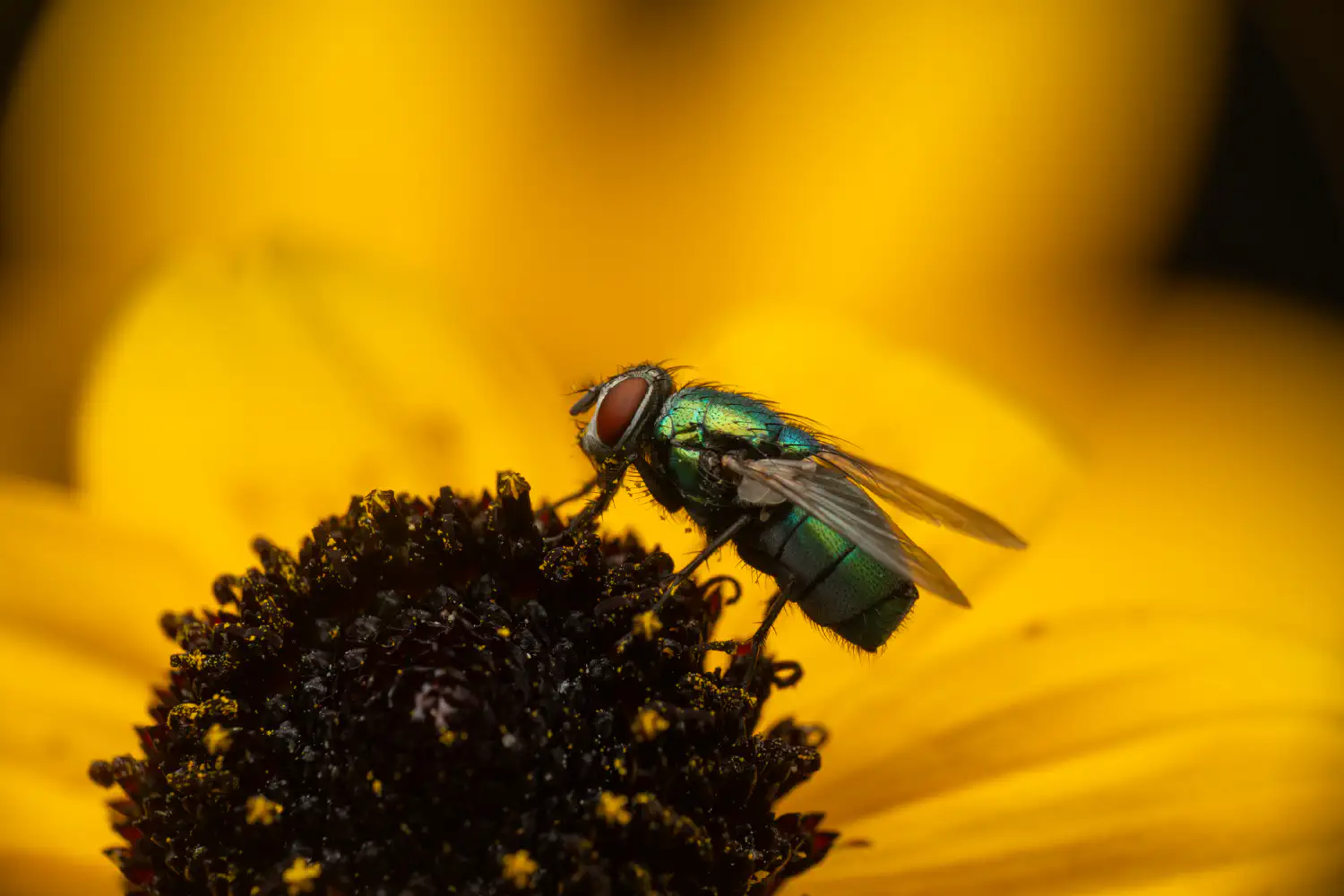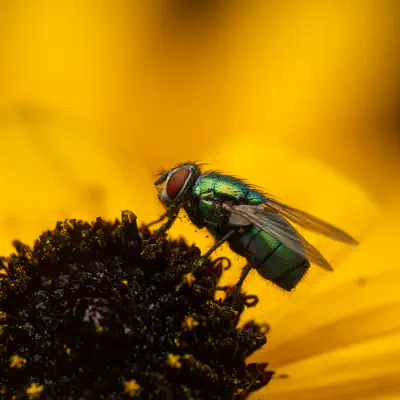Blow Flies Lat. “Calliphoridae“
The Calliphoridae (commonly known as blow flies, blow-flies, carrion flies, bluebottles, greenbottles, or cluster flies) are a family of insects in the order Diptera, with 1,100 known species. The maggot larvae, often used as fishing bait, are known as gentles. The family is known to be polyphyletic, but much remains disputed regarding proper treatment of the constituent taxa, some of which are occasionally accorded family status (e.g., Bengaliidae, Helicoboscidae, Polleniidae, and Rhiniidae).
Hierarchy
Diversity
About 1,900 species of blowflies are known, with 120 species in the Neotropics, and a large number of species in Africa and Southern Europe. Their typical habitats are temperate to tropical areas that provide a layer of loose, damp soil and litter where larvae may thrive and pupate.
Genera
Sources: MYIA, FE, Nomina, A/O DC This is a selected list of genera from the Palearctic, Nearctic, Malaysia (Japan), and Australasia:
Forensic importance
Blow flies are usually the first insects to come in contact with carrion because they have the ability to smell dead animal matter from up to 1 mi (1.6 km) away. Upon reaching the carrion, females deposit eggs on it. Since development is highly predictable if the ambient temperature is known, blow flies are considered a valuable tool in forensic science. Blow flies are used forensically to estimate the minimum post mortem interval (PMImin) for human corpses. Traditional estimations of time since death are generally unreliable after 72 hours and often entomologists are the only officials capable of generating an accurate approximate time interval. The specialized discipline related to this practice is known as forensic entomology. In addition to being used to estimate the PMImin, assuming colonization occurred after death, blow fly specimens found infesting a human corpse are used to determine if the corpse was relocated or if the individual ingested narcotics prior to death. Calliphora vicina and Cynomya mortuorum are important flies of forensic entomology. Other forensically important Calliphoridae are Phormia regina, Calliphora vomitoria, Calliphora livida, Lucilia cuprina, Lucilia sericata, Lucilia illustris, Chrysomya rufifacies, Chrysomya megacephala, Cochliomyia macellaria, and Protophormia terraenovae. One myth states that species from the genus Lucilia can sense death and show up right before it even occurs.
Identification
Fritz Konrad Ernst Zumpt Calliphorinae, in Lindner, E. Fliegen Palaearkt. Reg. 64i, 140 p. (1956) Fan, C. T. Key to the common synanthropic flies of China. Peking [= Beijing]. xv + 330 p. In Chinese but really excellent illustrations. (1965). Kano, R. and Shinonaga, S. Calliphoridae (Insecta: Diptera) (Fauna Japonica), Tokyo Biogeographical Society of Japan, Tokyo.( 1968). In English. Lehrer, A. Z., Diptera. Familia Calliphoridae. In: Fauna R.S.R., Insecta, vol. XI,(12), Edit. R.S.R., Bucuresti, 1972, 245 p. In Romanian. Rognes, K. Blowflies (Diptera: Calliphoridae) of Fennoscandia and Denmark. Fauna Entomologica Scandinavica, Volume 24. E. J. Brill/Scandinavian Science Press Ltd. Leiden.(1991).
External links
Media related to Calliphoridae at Wikimedia Commons Data related to Calliphoridae at Wikispecies Image Gallery at Diptera.info Secondary screwworm on the University of Florida / Institute of Food and Agricultural Sciences Featured Creatures website
Ancestry Graph
Further Information
„Blow Flies“ on iNaturalist.org
Copyright

This article uses material from the Wikipedia article Calliphoridae the free encyclopedia Wikipedia which is released under Creative Commons Attribution-ShareAlike 4.0 International License). On Wikipedia a list of authors is available.

Little beings in print
Order our calendars and books today!
Compiled with love. Printed sustainably. Experience our little beings even more vividly in print. All our publications are available for a small donation.


